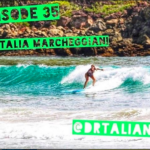If you’ve ever participated in the medical system somewhere in the world, chances are there is a medical chart out there with your name on it. I have one in my hands now and I task myself with the job of getting to know it. It is based on a true story: a patient who has entrusted me with his case. I read through the 200-page document, transfixed as stories in the untidy scrawl of half a dozen interns – some of them now well-immersed in practices of their own – unfold on the white pages. These pieces of paper, bound together by a fragile cardboard shell, capture snapshots in time of the encounter between these young practitioners and the patient. I read between the lines. Coffee stains represent early mornings that followed late nights, plainly stated observations reflect the colour of different lenses with which these young naturopaths-in-training saw the world at that time. Their pens tell 6 versions of the same story. Their treatment plans tell the story of emerging practice styles and personal healing philosophies.
I picture an imaginary scene in which a group of interns are sitting cross-legged in a circle with the patient in the centre. Each of them gazes at him intently and passes a chart to the young 20-something on her left, who them makes some observations, asks a few questions, takes some notes and then hands it off again. The patient, through all this must feel like a life-drawing model, naked and vulnerable and under the collective scrutiny of dozens of eyes connected to hands that busily capture something that is hidden to him. He must wonder what parts of this moment will remain eternally on paper.
The words must be joined together by imagination and I use mine as I envision this history unfurling through these relevant details that are relayed in stony language. But despite the professional gaze, the emotions are still present; each entry expresses much more than the words. I read of trauma and pain – physical, mental and emotional. I sense stuck feelings in the case, grief and strong anger and frustration. Like reading a good book, I am transfixed. But, unlike a book, as I read about each problem, I notice an immense responsibility to come running with my toolbox to the main character’s aid.
As I read, I notice empathy combine with discomfort and my skin prickles with the need to do something. I want to be the one to take the pain away. The helplessness is sometimes all-encompassing. But the pain is not mine for the taking.
I sit now, with the document in my hand and the patient before me in the flesh. The same concerns that have been documented for years are now surfacing verbally. The words combine with hand gestures and facial expressions and seem to float in the air and I try to reach out and catch them, pinning them to the page; at least I can do that. As he talks, I sample parts of the same despair he expresses. I feel pressured to have an answer; I suspect prescribing protein powder is not it.
I tell myself that I’m not the first faced with this case to feel helpless, nor will I be the last. I encourage myself to look for narratives of hope: our patient has improved somewhat but, more than that, has endured at the clinic. He hasn’t given up hope and therefore something must be working; something significant is motivating him to shell out the money for bus fare so that he can give us an hour of his time. So, I ask him what has been helping and he replies, “B12 injections have helped give me energy and feel less pain.” He considers these words, seems to also see them floating before his lips (I struggle to anchor them to the page: B12 injections help). He then adds, “and I felt better when I was receiving acupuncture… much more relaxed.” (Acupuncture has helped relax). However, I sense he is here for something else too. It could be the social connection or the satisfaction of venting. More still, maybe he just needs someone to sit with him and watch, to bear witness. A person who will sit and not minimize, shy away from or brush off the suffering. Someone who is comfortable enough to sit with the agony hanging heavy in the air and watch with respect as the emotions surface. Perhaps he just needs a body to contribute the lungs that will continue breathing as the emotions eventually subside, evidence that somehow life continues even though there is pain and immense suffering mixed up in all of it.
We can give vitamins, perform procedures and take our notes, but one thing that helps and costs no money is the ability to lend our presence.
So I close the chart and listen. I honour my curiosity and ask questions. When those questions are answered I listen intently and then ask some more. At the end I write a few paragraphs of notes: a synopsis for the next intern who will receive the chart, read it, write something more and then eventually pass it on. I hope it will occur to her to listen too.









Beautiful.
Thanks, Em!